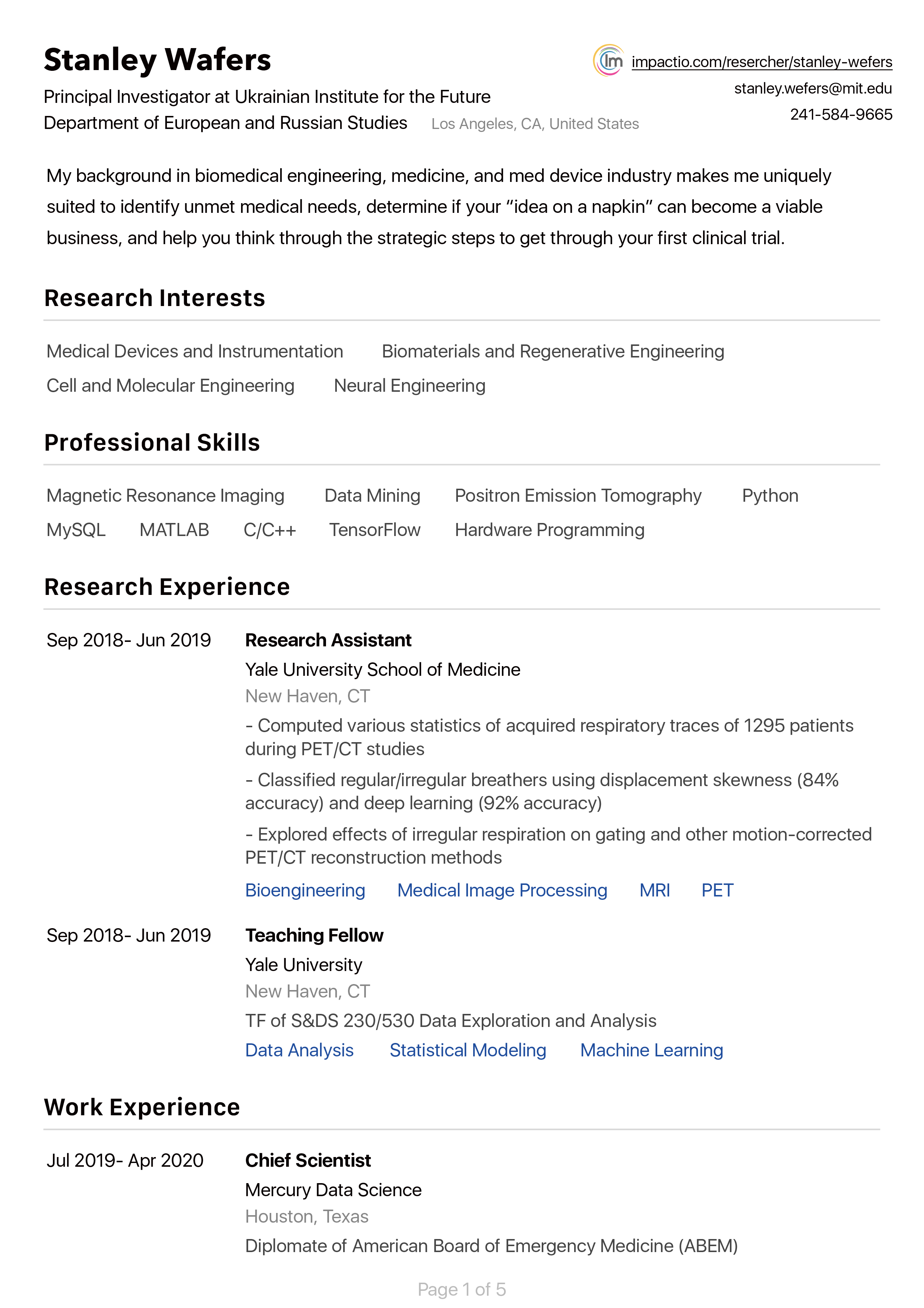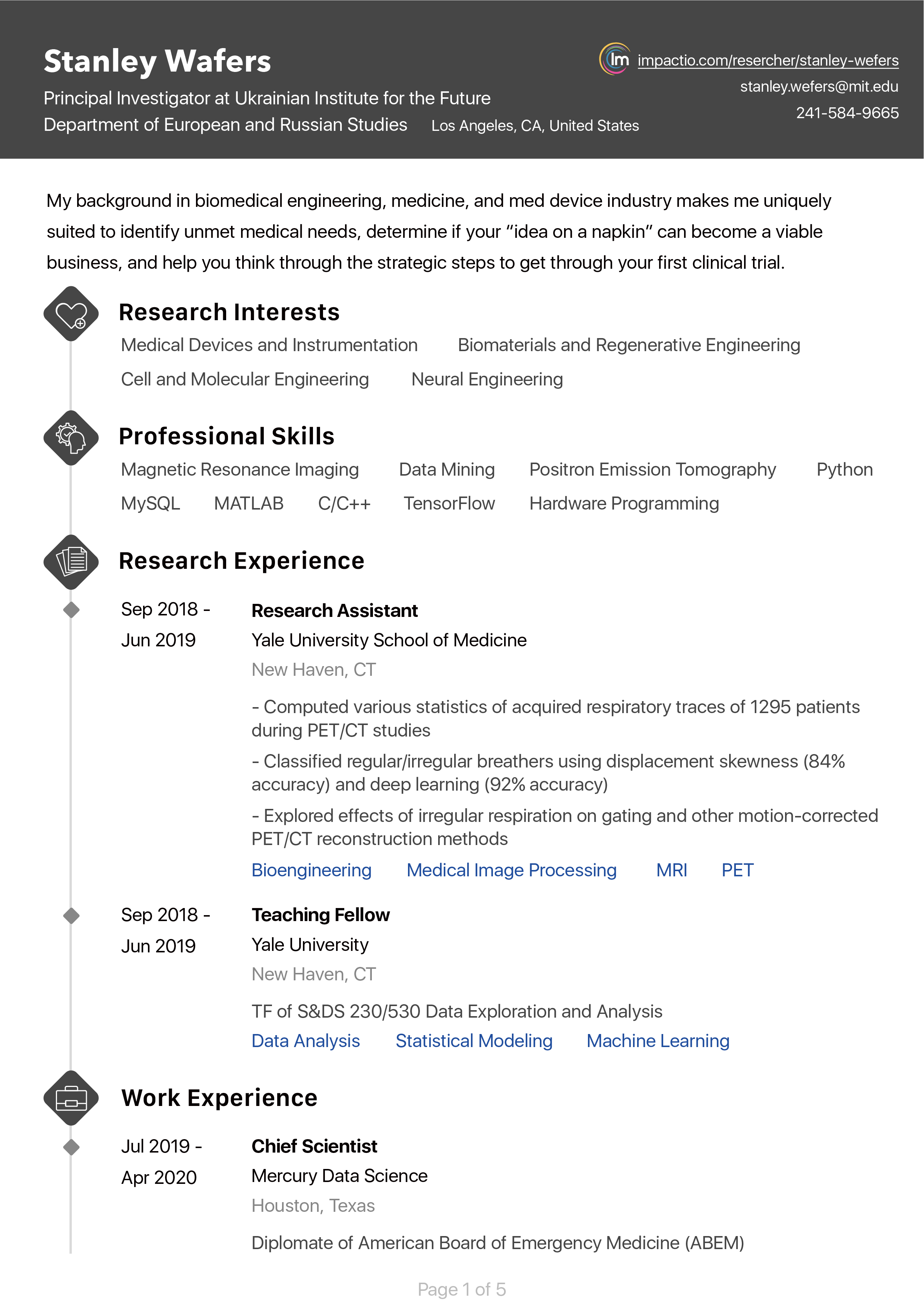建置冠狀動脈疾病電腦斷層暨多模式巨量影像資料庫以開發人工智慧自動判讀、多模式冠狀動脈灌流自動分析、及冠狀動脈疾病進展智慧預測演算程式(2/3)
以螢光生命週期顯微術探測脂肪組織的胰島素抗性
Abstract
Abstract: Metabolic syndrome (MetS) has been a major clinical issue worldwide, also inTaiwan. MetS patients have high risk to develop type 2 diabetes mellitus (T2DM) andcardiovascular disease (CVD). Insulin resistance (IR) is the core issue of MetS,developing a clinical diagnostic tool for direct measurement of IR will promote thestudy of MetS pathogenesis and help MetS patients control disease progression.Adipose tissue (AT) is the main repository which can release many hormonesregulating metabolism, thus regarded as an indicator of early development of IR. Themain pathological nodes of adipocyte dysfunction are adipocyte hypertrophy,hypoxia, inflammation, and IR. Fluorescence lifetime microscopy (FLIM) is apowerful tool to measure cell metabolism status in vivo. Applying FLIM in the studyof adipocytes will have the potential to develop a powerful tool for detecting IR invivo. The purpose of this study is to verify the FLIM measurement of AT in differentmetabolic stress status, including adipocyte hypertrophy, hypoxia, and inflammation.We will use FLIM to evaluate the glycolysis induced by hypoxia in adipocytes, anduse insulin-Au and 2-NBDG to confirm the uptake of insulin and sugar, and analyzethe hypertrophy of the adipocytes from the images. In addition, inflammation of theadipocytes can be observed simultaneously in mice that are transfected with EGFP onmacrophage. We will carry out cell and tissue studies to verify our measurements ofadipocyte in different metabolic stress status. Then, we will carry out animal studiesthat verify our measurements of AT of LyxM-EGFP C2J mice with DM. In parallel,we will carry out clinical studies that verify FLIM measurement of AT of patientswith CAD/DM. Based on the literature review and our previous work, we expect thatFLIM measurements will identify adipocytes in different metabolic stress status andwill be significantly associated with DM / CAD in clinical studies. Therefore, thisproject will successfully establish a novel measurement method for MetS diagnosis,benefit to clarify the upstream mechanism of adipocyte dysfunction and monitor thedevelopment of MetS.
剖析體循環白血球及心外膜脂肪組織之致動脈硬化及代謝異常特性之分子機轉---應用獨創之非侵入式倍頻非線性功能性光學生檢系統及流式細胞分析檢驗平台
Abstract: Background—We have first demonstrated that thickness of epicardial adipose tissue (EAT) in the left atrioventricular groove is the only EAT measurement significantly associated with the metabolic syndrome, systemic inflammatory markers, and coronary atherosclerosis after adjustments for intra-abdominal adiposity. We also show that EAT is associated with enhanced release of various inflammatory markers and adipokines. By applying the unique harmonic-generation microscopy (HGM) optical virtual biopsy system with subcellular resolution and fluorescent human insulin-Au nanodots (ND), we further demonstrate that, compared to patients with no cardiovascular risk factors, patients with coronary artery disease (CAD) have wider variation in the size of epicardial adipocytes and decreased insulin uptake in adipocytes, particularly at the intracellular lipid droplets level. In this 3-year project, we will not only explore the topographic variation of the above-mentioned characteristics of epicardial adipocytes, their cellular metabolic status by an novel fluorescent metabolic imaging, and their downstream signaling pathways, but also extend to investigate the extent of cellular insulin resistance in circulating leukocytes and their subpopulations to further advance the recognition and management of insulin resistance and atherosclerotic diseases. Methods and Expected Results—In the first 1.5 years of this 3-year research project, we plan to extend our previous observations by (1) applying the HGM to analyze whether there is regional variation in the proportion of small-sized (<40 mm) adipocytes, the cellular insulin-Au ND uptake profile, and metabolic status in EAT; and (2) investigating the the cellular insulin-Au ND uptake profile of circulating leukocytes and their subpopulations obtained from CAD patients undergoing bypass surgery and non-CAD patients undergoing valve surgery, either with or without diabetes in a 2 x 2 design. 80 CAD patients and 40 age, gender, and body mass index-matched non-CAD patients will be included. Correlation analyses of the cellular (adipocyte or leukocyte) measurements from the above analyses with cytokine/adipokine profiles (adiponectin, resistin, leptin, IL-6, IL-8, TNF-a, monocyte chemoattractant protein-1, macrophage inflammatory protein-1b, granulocyte colony stimulating factor, IL-1ra, Sfrp5, PGC-1a and UCP-1) from adipose tissue-conditioned media, various systemic metabolic parameters, serum markers of inflammation and adipokines, and parameters of global and individual coronary atherosclerosis will be done to elucidate their clinical significance. In the second 1.5 years of this 3-year research project, we will (1) assess the expressions of various signaling molecules in adipocytes of different size among patients with different disease status and whether these molecules are related to the trafficking of insulin-Au in and out of adipocytes and intracellular lipid droplets, not only in human surgical specimens, but also in cultured 3T3-L1 adipocytes; (2) investigate the correlation of expression profile of intracellular signaling pathway molecules with the insulin uptake status in circulating leukocytes and their subpopulations to elucidate their pathophysiological significance; and (3) assess the clinical utility of leukocyte functional analysis for risk-stratification and therapeutic guidance. We will perform molecular analyses (western blotting and quantitative reverse transcriptase-polymerase chain reaction [RT-PCR], etc.) to assess the expressions of insulin-receptor-related molecules (insulin-receptor, insulin receptor substrate-1, caveolin-1, Akt, PPARg, and SREBP-1C), lipid-droplet-related molecules (perilipin-1, CGI-58, CIDEC, cavin-1, hormone-sensitive lipase, and ATGL), and inflammation-related molecules in human adipocytes of different sizes by cell fractionation, 3T3-L1 adipocytes of different sizes, and different leukocyte subpopulations. Clinical Significance—This 3-year research project will be a breakthrough in the field of insulin resistance and atherosclerosis research as we are for the first time able to directly measure insulin sensitivity of circulating leukocyte and its subpopulations. Results from this project will provide us opportunities to ameliorate/prevent diseases from insulin resistance to atherosclerosis by early identification of cellular insulin resistance and modulating the “crazy” visceral adipose tissues at the molecular level. Methodological breakthrough established in this project can be translated to other fields of medical research and even be applied to clinical practice (for example, leukocyte insulin sensitivity functional analysis as a better marker of insulin sensitivity).
動脈硬化
倍頻顯微鏡
胰島素
白血球
奈米顆粒
adipose tissue
atherosclerosis
harmonic-generation microscope
insulin
leukocyte
nanoparticle
剖析體循環白血球及心外膜脂肪組織之致動脈硬化及代謝異常特性之分子機轉---應用獨創之非侵入式倍頻非線性功能性光學生檢系統及流式細胞分析檢驗平台
Abstract: Background—We have first demonstrated that thickness of epicardial adipose tissue (EAT) in the left atrioventricular groove is the only EAT measurement significantly associated with the metabolic syndrome, systemic inflammatory markers, and coronary atherosclerosis after adjustments for intra-abdominal adiposity. We also show that EAT is associated with enhanced release of various inflammatory markers and adipokines. By applying the unique harmonic-generation microscopy (HGM) optical virtual biopsy system with subcellular resolution and fluorescent human insulin-Au nanodots (ND), we further demonstrate that, compared to patients with no cardiovascular risk factors, patients with coronary artery disease (CAD) have wider variation in the size of epicardial adipocytes and decreased insulin uptake in adipocytes, particularly at the intracellular lipid droplets level. In this 3-year project, we will not only explore the topographic variation of the above-mentioned characteristics of epicardial adipocytes, their cellular metabolic status by an novel fluorescent metabolic imaging, and their downstream signaling pathways, but also extend to investigate the extent of cellular insulin resistance in circulating leukocytes and their subpopulations to further advance the recognition and management of insulin resistance and atherosclerotic diseases. Methods and Expected Results—In the first 1.5 years of this 3-year research project, we plan to extend our previous observations by (1) applying the HGM to analyze whether there is regional variation in the proportion of small-sized (<40 mm) adipocytes, the cellular insulin-Au ND uptake profile, and metabolic status in EAT; and (2) investigating the the cellular insulin-Au ND uptake profile of circulating leukocytes and their subpopulations obtained from CAD patients undergoing bypass surgery and non-CAD patients undergoing valve surgery, either with or without diabetes in a 2 x 2 design. 80 CAD patients and 40 age, gender, and body mass index-matched non-CAD patients will be included. Correlation analyses of the cellular (adipocyte or leukocyte) measurements from the above analyses with cytokine/adipokine profiles (adiponectin, resistin, leptin, IL-6, IL-8, TNF-a, monocyte chemoattractant protein-1, macrophage inflammatory protein-1b, granulocyte colony stimulating factor, IL-1ra, Sfrp5, PGC-1a and UCP-1) from adipose tissue-conditioned media, various systemic metabolic parameters, serum markers of inflammation and adipokines, and parameters of global and individual coronary atherosclerosis will be done to elucidate their clinical significance. In the second 1.5 years of this 3-year research project, we will (1) assess the expressions of various signaling molecules in adipocytes of different size among patients with different disease status and whether these molecules are related to the trafficking of insulin-Au in and out of adipocytes and intracellular lipid droplets, not only in human surgical specimens, but also in cultured 3T3-L1 adipocytes; (2) investigate the correlation of expression profile of intracellular signaling pathway molecules with the insulin uptake status in circulating leukocytes and their subpopulations to elucidate their pathophysiological significance; and (3) assess the clinical utility of leukocyte functional analysis for risk-stratification and therapeutic guidance. We will perform molecular analyses (western blotting and quantitative reverse transcriptase-polymerase chain reaction [RT-PCR], etc.) to assess the expressions of insulin-receptor-related molecules (insulin-receptor, insulin receptor substrate-1, caveolin-1, Akt, PPARg, and SREBP-1C), lipid-droplet-related molecules (perilipin-1, CGI-58, CIDEC, cavin-1, hormone-sensitive lipase, and ATGL), and inflammation-related molecules in human adipocytes of different sizes by cell fractionation, 3T3-L1 adipocytes of different sizes, and different leukocyte subpopulations. Clinical Significance—This 3-year research project will be a breakthrough in the field of insulin resistance and atherosclerosis research as we are for the first time able to directly measure insulin sensitivity of circulating leukocyte and its subpopulations. Results from this project will provide us opportunities to ameliorate/prevent diseases from insulin resistance to atherosclerosis by early identification of cellular insulin resistance and modulating the “crazy” visceral adipose tissues at the molecular level. Methodological breakthrough established in this project can be translated to other fields of medical research and even be applied to clinical practice (for example, leukocyte insulin sensitivity functional analysis as a better marker of insulin sensitivity).
動脈硬化
倍頻顯微鏡
胰島素
白血球
奈米顆粒
adipose tissue
atherosclerosis
harmonic-generation microscope
insulin
leukocyte
nanoparticle
探究心外膜脂肪組織之致動脈硬化及代謝異常特性之分子機轉:應用獨創之非侵入式倍頻非線性光學生檢系統及具生物活性之胰島素-金奈米顆粒進行深入剖析
探究心外膜脂肪組織之致動脈硬化及代謝異常特性之分子機轉:應用獨創之非侵入式倍頻非線性光學生檢系統及具生物活性之胰島素-金奈米顆粒進行深入剖析
探究造成”心包膜脂肪局部厚度與代謝症候群危險因子聚集及冠狀動脈硬化具特殊相關性”之分子機轉:微型核醣核酸角色及其臨床和預後意義
探究造成"心包膜脂肪局部厚度與代謝症候群危險因子聚集及冠狀動脈硬化具特殊相關性"之分子機轉
探究造成"心包膜脂肪局部厚度與代謝症候群危險因子聚集及冠狀動脈硬化具特殊相關性"之分子機轉
檢驗各種血小板功能檢測法對預測心血管疾病患者接受冠狀動脈介入治療之預後的效度研究
檢驗各種血小板功能檢測法對預測心血管疾病患者接受冠狀動脈介入治療之預後的效度研究
利用多探頭電腦斷層攝影探究胰島素增敏劑對合併胰島素阻抗之冠心病患改善冠狀動脈鈣化程度及班塊脆弱度及體積之影響
利用多探頭電腦斷層攝影及血管內超音波探究胰島素增敏劑對合併胰島素阻抗之冠心病患改善冠狀動脈硬化之療效
對非糖尿病代謝症候群患者單獨使用胰島素增敏劑或Statins或合併使用兩者對代謝症候群各成份、血管內皮細胞功能及炎性反應指標之影響---兼論患者基因形態對藥物效應之交互作用
對非糖尿病代謝症候群患者單獨使用胰島素增敏劑或Statins或合併使用兩者對代謝症候群各成份、血管內皮細胞功能及炎性反應指標之影響---兼論患者基因形態對藥物效應之交互作用
對非糖尿病合併型血脂肪過高患者使用PPARg Agonist、PPARa Agonist、或HMGCoA還原脢對各種嶄新心血管疾病危險因子之影響
利用微矩陣研究糖尿病小鼠心臟之基因表現型態









